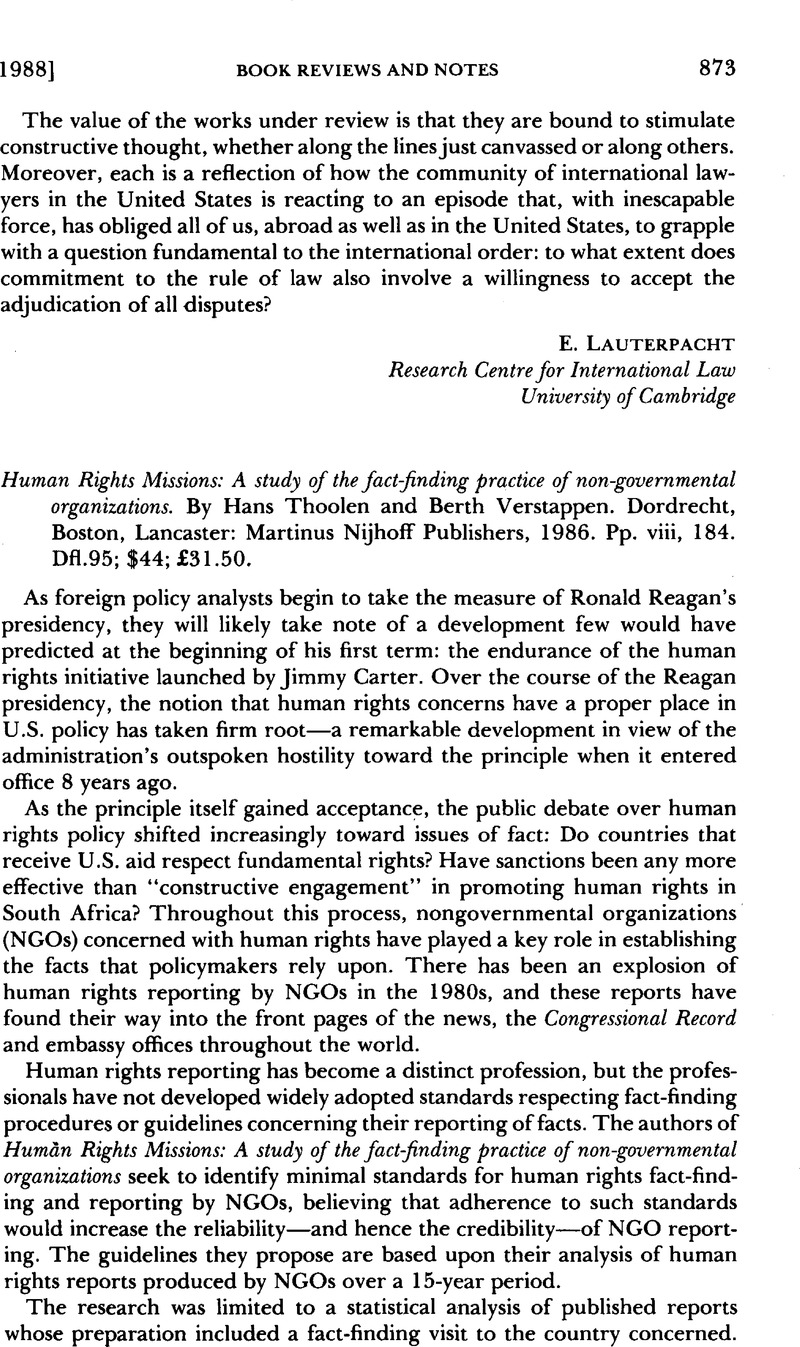No CrossRef data available.
Article contents
Human Rights Missions: A study of the fact-finding practice of non-governmental organizations. By Hans Thoolen and Berth Verstappen. Dordrecht, Boston, Lancaster: Martinus Nijhoff Publishers, 1986. Pp. viii, 184. Dfl.95; $44; £31.50.
Published online by Cambridge University Press: 27 February 2017
Abstract

- Type
- Book Reviews and Notes
- Information
- Copyright
- Copyright © American Society of International Law 1988
References
1 The questionnaires were completed by the researchers on the basis of their own reading of the reports; they were not completed by the NGOs that published the reports.
2 For example, noting that few reports refer to preliminary visits to the country in question, the authors speculate that “[i]t is fair to assume that this can be explained to a large degree by budgetary constraints” (p. 99).
3 The authors conclude, for example, that governments are no more likely to cooperate with NGO delegates when contact has been made before the visit than when it has not. To reach this conclusion, they seem to have assumed that NGO reports consistently make mention of advance contacts in cases where they were established. In fact, many NGOs regularly make advance contacts but do not consider it necessary to refer to these in their reports.
4 The limitations of the authors' approach are illustrated by the treatment of the practice of issuing press releases during on-site investigations. Applying its statistical analysis approach, the study reports the number of times that published reports indicate that delegates to the country concerned issued a press release during their visit: It does not—and, because of the authors’ self-imposed limitations, cannot—explore in any depth the complex issues raised by this practice.
5 This is especially evident in the report’s concluding analysis of the geographical imbalance in NGO reporting on human rights violations. Possible reasons for the imbalance are repeat edly (and necessarily) introduced with language of speculation: “The reasons most likely to be offered by NGO’s for not sending missions to other countries are that …” (p. 137); “We have the impression that other … considerations play an equally decisive role” (p. 138); “Another explanation … may be that …” (id.).
6 An example is the authors’ recommendation that NGOs make a greater effort to reflect in their reports “[n]uances in the degree of consensus or indications of what were difficult decisions” among mission delegates (p. 136). They offer the following reasoning:
Although the fear for a loss of impact by the presentation of dissenting opinions may be founded on some negative experiences, we feel that the almost total absence of differences of opinion in the reports contributes equally to a loss of credibility. This unanimity becomes particularly unbelievable in cases where large and varied delegations visit a number of countries [id.].
Significantly, the authors’ research did not include an attempt to determine any correlations between the extent to which a report’s conclusions are presented as unanimous and the readers’ perceptions of the report’s credibility.


